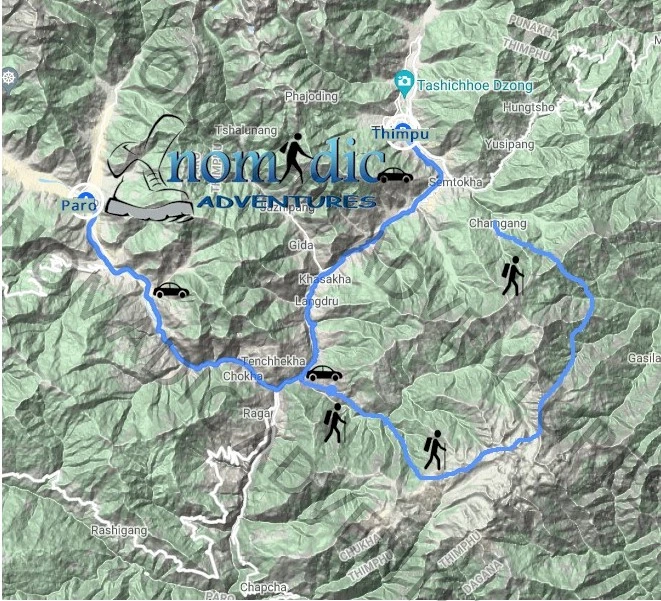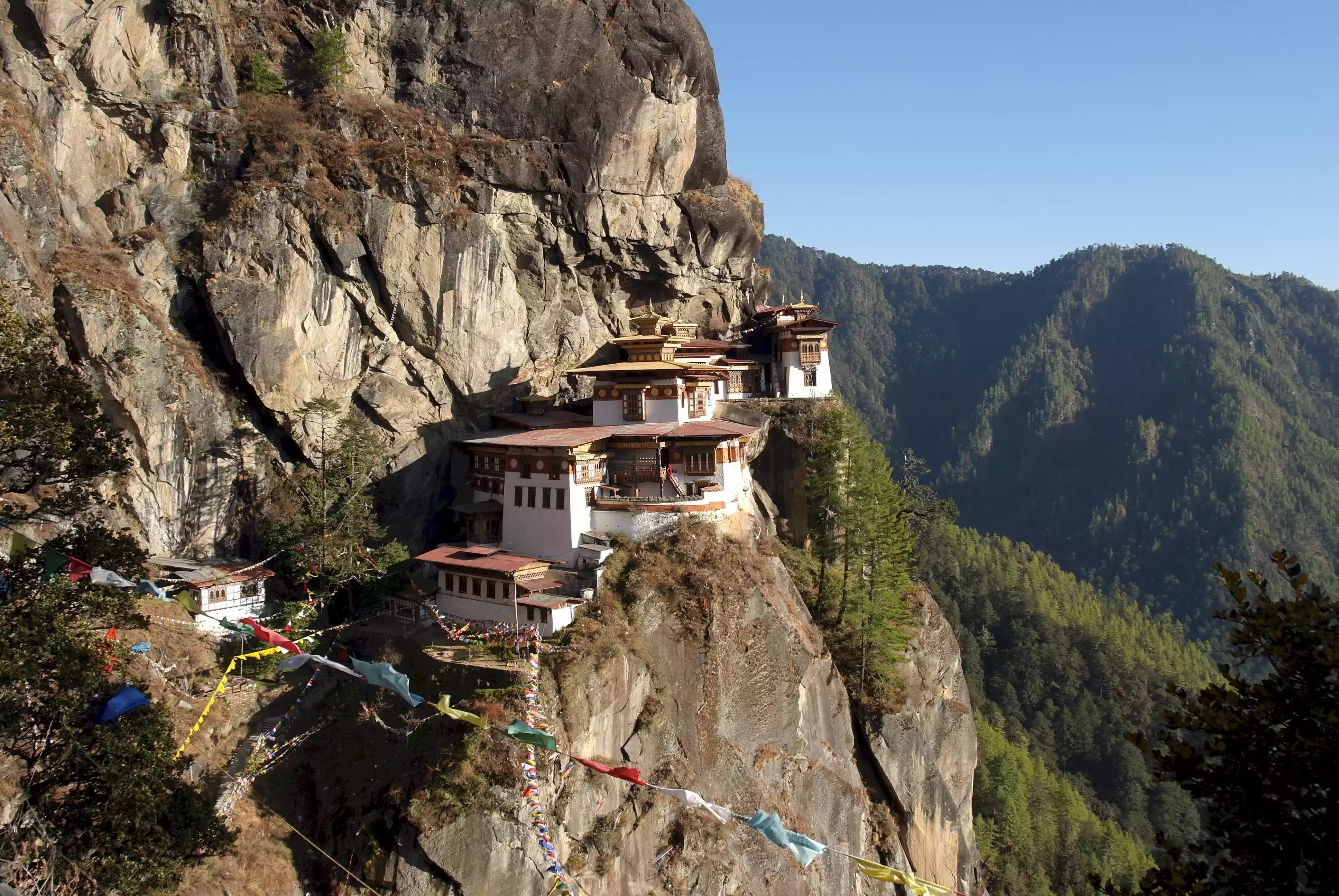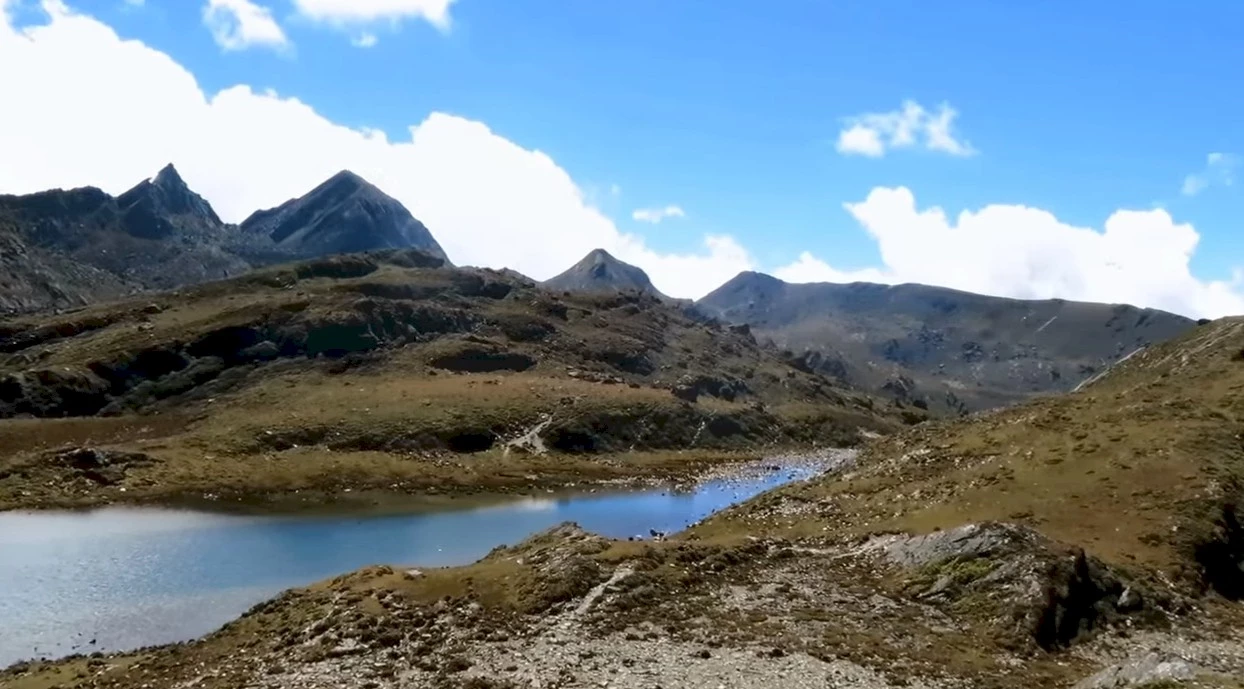Day-1: Arrival Paro (By Druk Air).
The flight into Paro is a brilliant introduction to the spectacular beauty of Bhutan. In clear weather, magnificent views of the worlds highest peaks give way to the lush green Paro valley as you land. On arrival you will be met and driven to your hotel. Evening visit to Paro market and town. Overnight at the hotel in Paro.

Day-2: Paro
This morning we drive along the winding road northwest up the Pa Chu (Paro River) to Drukgyel Dzong, the ruined fort which once defended the valley from Tibetan invasions. Mount Jhomalhari, the sacred summit, reaches skyward beyond the Dzong. On return to Paro Valley, we visit to a traditional Bhutanese farm house as well as the Kyichu Lhakhang, one of the oldest and most sacred shrines of Bhutan, dating from the introduction of Buddhism. Afternoon visit the Ta Dzong, an ancient watch tower which now houses Bhutan';s national museum. The museum's interesting collection includes ancient Bhutanese art and artefacts, weapons, stamps. After that walk done the trail to visit Rinpung Dzong, built in 17th century, it is symbolic as the religious and secular affairs of the valley. Overnight at the hotel in Paro.
Day-3: Paro -Thimphu
This morning we drive downstream along side the Pa Chu (Paro River) to its confluence with Wang Chu (Thimphu river) then up valley to Thimphu, the capital town. Before arriving at Thimphu, we visit Somtokha Dzong, Kingdom's oldest fortress which is now used as Dzongkha language school of Bhutan. Afternoon visit Memorial Chorten, built in the memory of Third King of Bhutan. We then visit Tashichhodzong, Thimphus most impressive building situated at the banks of Wang Chu. It houses National Assembly, King's Throne room and also the summer residence of Chief of monk body. In the evening we take a stroll through Thimphu market and town. Overnight at the hotel in Thimphu.

Day-4: Thimphu
After breakfast, visit the Painting school where centuries old art of Bhutanese paintings is taught. National Library is another interesting place to visit which houses vast collection of ancient Buddhist texts, manuscripts. Also visit to Traditional Medicine Institute where centuries old healing arts still practiced. Afternoon visit Handicrafts Emporium. Here exotic weaves in silk, wool, cotton, silver jewellery, carpets, thangkha paintings, bamboo ware and another traditional crafts of the Kingdom are available. Evening drive to view point for a fascinating view of Thimphu valley. Overnight at the hotel in Thimphu.
Day-5: Thimphu - Genekha [14 Km, 4 Hours]
This morning we start out trek by driving for 45 minutes to reach starting point of the trek. The first day involves a walk along a mule path for four hours at the signboard of Genekha School. The trail is decorated with terraced fields and coniferous vegetarian are abundant. Overnight at Genekha alongside a stream at 2800m.
Day-6: Genekha - Gur [15 Km, 4 Hours]
On todays trek we should encounter a lot of birdlife and stunning scenery. Two hours of gradual uphill walk and rest at a huge rock platform, offers a picturesque view of the valley below. After another two hours the trek ends. Overnight at Gur.
Day-7: Gur - Labatama [12 Km, 5 Hours]
While trekking across the ridges, one enjoys the beauty of the rugged mountain vegetarian. Todays trek is amidst flowers and wild asparagus (in spring). The first pass is marked with huge cairns and gives a spectacular view of the whole Dagala range, to the hearders camp. After lunch we walk across hills and meadows, ending the third day of trek. Camp at altitude 4300m near Utso lake.
Day-8: Labatama
This day is for an excursion to any of three lakes; Relitso, Hetso and Amatso. Your guide will reveal mystic stories about these lakes. Overnight in the camp.

Day-9: Labatama
Extension to Sestoand nearby lakes. Hike to Sesto is easy and interesting. Afterwards walk over a small ridge and then down to Jagetso lake. We spend the day trout fishing with packed lunch at the lake side. You have the option of attempting to climb "Jomo" a peak of 5050m. Lunch at the summit with spectacular view of the surroundings. Return to camp by dusk and prepare for the next day.
Day-10: Labatama - Panka [8 Km, 4 Hours]
Walk for 20 min uphill to about 4520m on the west side of Dala Tsho. Your guide will point out the incredible Himalayans peaks of Mount. Everest, Kanchenjunga, Jhomalhari, Jichu Drake, Tshrim Khang, Gangbom, Masagang, Tsendaygang and Gangchen Ta. Here the Himalayan monal pheasants are a common sight along with yaks and horses.
Day-11: Panka - Talikha [8 Km, 4 Hours]
This day entails crossing several passes, each one more impressive than the other. In June and July, there are many different coloured Blue Poppy and mountain birds. Lunch at the point where one trail leads to Talekha and other to Wangdiphodrang. After lunch an hours gradual climb brings you to the tip of last Dagala range from where view of Thimphu valley is spectacular, it appears as though Thimphu is spread is the palm of observers hand. An hours walk and you are at the last camp, little above Talikha monastery.
Day-12: Talekha - Thimphu - Paro
Passing through alpine and mixed vegetation (bamboo thickets and wild flowers) one reaches Talekha monastery and village and once again Thimphu view is superb. Passing through mixed vegetation and apple orchards, one reaches the main road to Thimphu where your transport is waiting. Here the trek ends. Drive to Thimphu for lunch. Evening drive back Paro. Overnight at the hotel in Paro.
Day-13: Paro Depart
After early breakfast in the hotel, drive to the airport for flight to onward destination.
End of services
